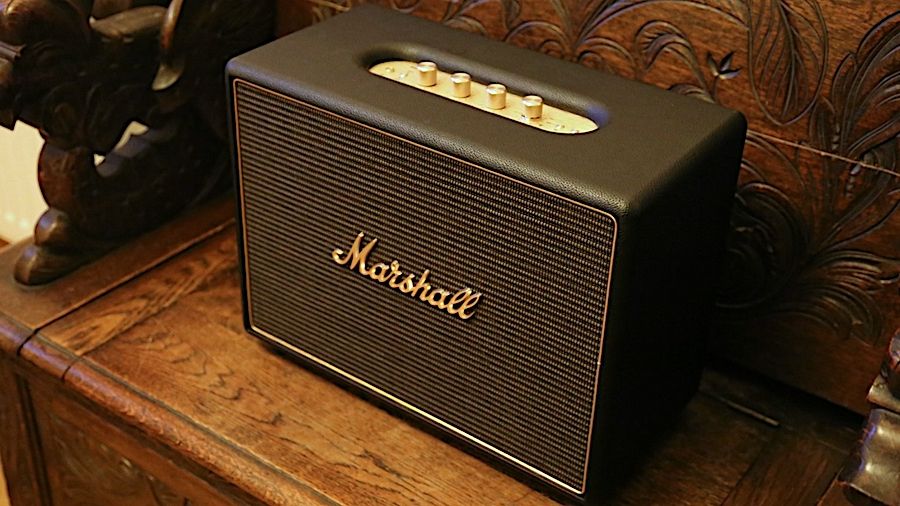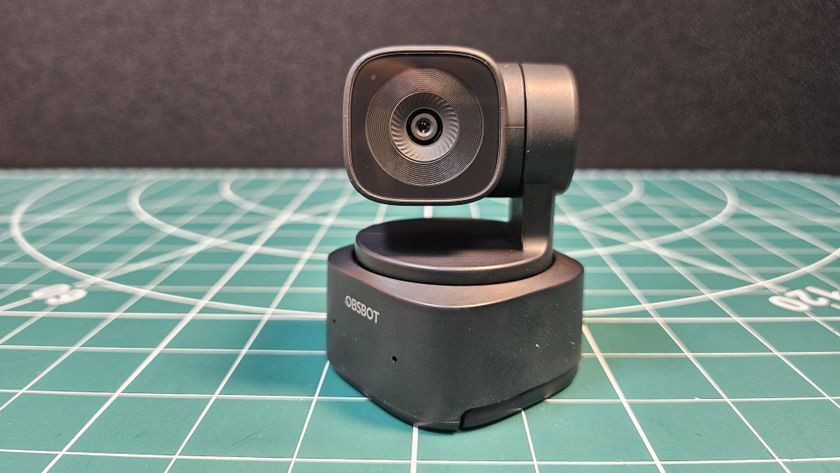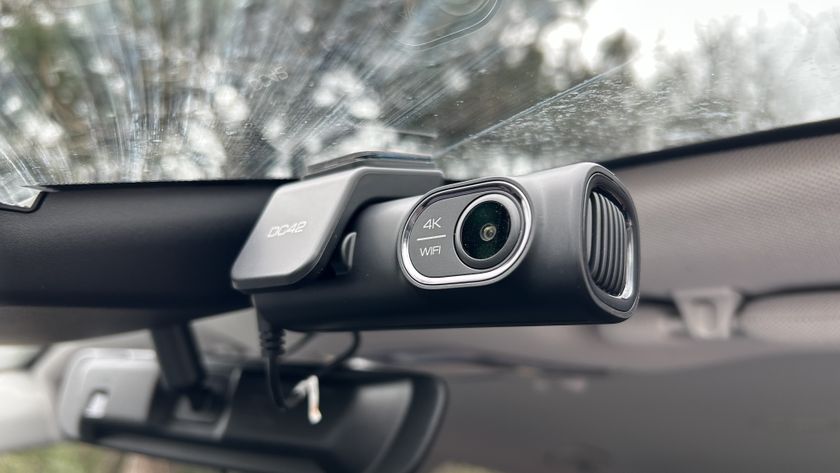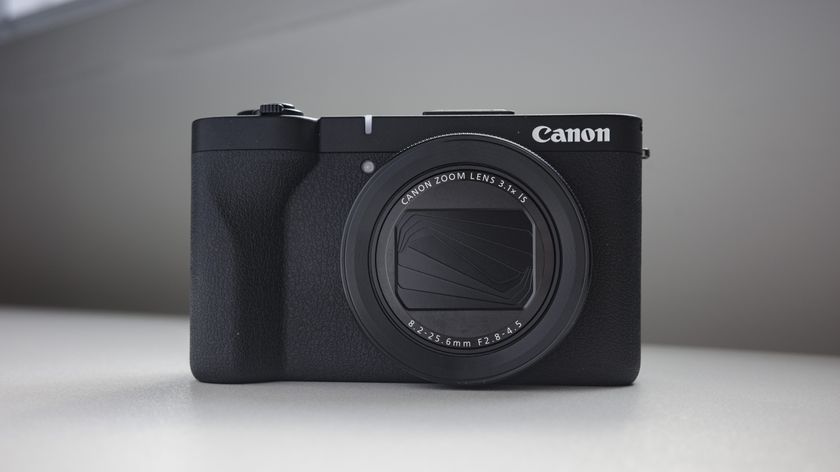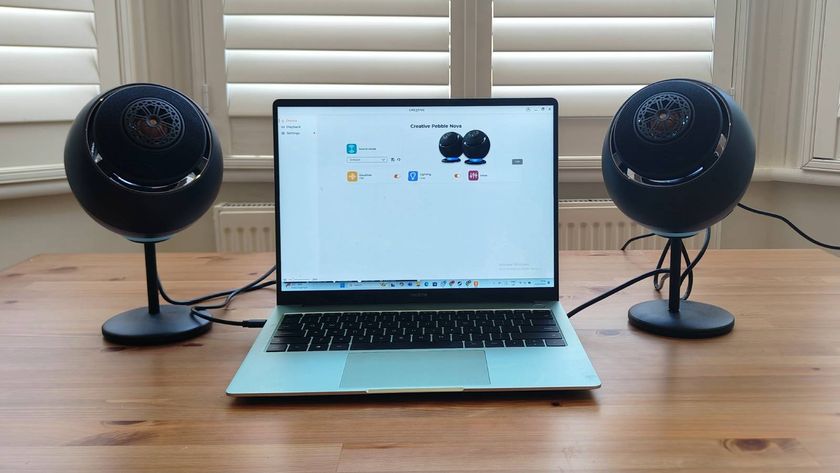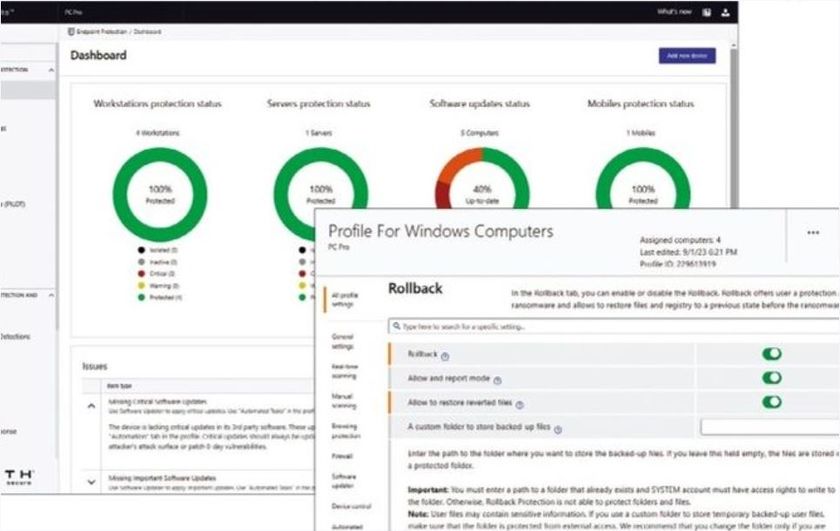TechRadar Verdict
Incredibly loud, and with an unmistakably iconic design, this skilled centrepiece wireless speaker balances Bluetooth, AirPlay, ChromeCast, Spotify Connect and multi-room.
Pros
- +
Big sound
- +
Phono input
- +
AirPlay, ChromeCast & Spotify Connect
- +
Iconic design
Cons
- -
High price
- -
Volume is overkill
- -
Lacks a remote
- -
Dominating design
Why you can trust TechRadar
Here's a multi-room speaker that looks unashamedly like a bulky Marshall amplifier you might find on stage at a gig. Need your own Wall of Sound at home? If you do, the Woburn spits out a pretty serious 110W from any device with Wi-Fi or Bluetooth. Compatible not only with AirPlay, ChromeCast and Spotify Connect, but also with two other wireless speakers in Zound's Marshall collection – the Acton and Stanmore – the Marshall Woburn makes one helluva sound.
The new collection of Marshall multi-room speakers are all about presenting a stylistic alternative to Sonos. And like its nemesis, the Sonos Play:5, the Woburn has no remote control. Compatible with Apple AirPlay, Google ChromeCast and also baked-in to Spotify, the Woburn can be installed using the Google Home app on either OS, and connected to via WiFi or Bluetooth. However, it does have hard-button controls.
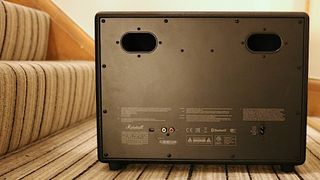
The release of the Woburn and its smaller stablemates, the Acton and Stanmore, has led to some confusion because the manufacturer Zound used these names a couple of years ago on some basic Bluetooth speakers. The newer products' much higher prices are the only giveaway. The Marshall Woburn is available in black or cream, and sells for $599 (£539 / AU$700).
Design
Stylistically all three speakers in Zound's Marshall multi-room collection are of obvious Marshall heritage, but only the Woburn is big enough to avoid looking like a novelty product. It does actually look like a small practice amplifier from Marshall. It almost feels like a shame you can't plug a real guitar in.
Measuring 400x308x200mm and weighing 7.9kg, the Woburn is adorned by a big brassy Marshall logo and matching beading around the edge of a nicely stitched fabric speaker grille. On the top are some brass knobs for volume, bass, treble, and for selecting the audio source. They allow for some pretty finely-grained tweaks to the soundstage, and nearby are some more manual controls; forward-skip and backwards-skip buttons.
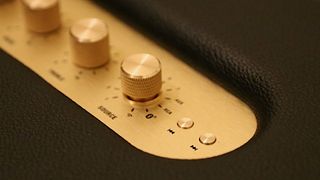
Features
Up there is also a 3.5 mm socket auxiliary input for wiring-in a phone, tablet or laptop, and in the box is a cable for that purpose that stretches well over a metre. It's even partially coiled to mimic a guitar lead.
Apart from its centrepiece size, what we love about the Woburn are some right and left-channel RCA audio inputs on its rear. They make the Woburn ideal for hooking-up a turntable or CD player, which goes much further towards setting-up a home hi-fi system that the rather narrow concept of smartphone-led wireless streaming and/or multi-room.
With WiFi and Bluetooth 4.2, the Woburn is compatible with ChromeCast, Apple AirPlay and Spotify Connect, while on the inside are a two 15W Class D amplifiers for the tweeters and two 40W Class D amplifiers for the woofer. That's a whopping 110W in total.

Set-up
Whether you have an iPhone or Android device, setting-up the Woburn takes place within the Google Home app. It instantly located the speaker as soon as it was attached to the mains (there is no on or off switch), and linked it to a home Wi-Fi network.
However, when we tried to network its smaller sibling, the Acton, Google Home instantly recognised the presence of the latter, but then lost all trace of it. None of the trademark guitar riffs were audible, but it did link to it successfully in the background. There are obviously a few bugs that need ironing-out.
Performance
The sound quality offered by the Woburn is as pleasing as its iconic styling. The volumes go unbelievably high, but there's no trace of distortion, and the ability to tweak the bass and treble levels is welcome. In fact, anyone who likes big bass is going to love the Woburn, which manages to deliver reams of low-frequency response without muddying the midrange. It's a clean, detailed and dynamic, yet warm sound.
However, there are a few quirks. The Woburn seems obsessed with high volumes; we found that it was impossible to get it down to a very quiet volume for listening to at night. That's a lifestyle thing, but personally, that puts us off. Also, while listening to an internet radio station, if you choose to assign it to an empty preset via the Multi-Room app, the Woburn plays a quick guitar riff before ceasing streaming. More bugs.
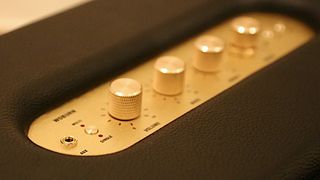
As a pure multi-room system, it then worked reasonably well. Hooked-up to the two other speakers in the collection, Acton and Stanmore, we had Bjork's Utopia album playing in perfect sync in three rooms.
The Marshall Multi-Room app is pretty straightforward; each 'zone' speaker can be toggled to 'single' or 'multi', so it's easy to see which speaker is live and playing.
However, controlling it all is not as easy as on a the Sonos app. You can't cue-up songs, and the impressive versatility across devices and various apps does lead to a slightly disjointed user experience.
We liked
Aside from having Apple AirPlay, Spotify Connect and ChromeCast built-in, and its excellent all-round sound quality, the brass knobs on top of the Woburn are its stylistic highlight.
As well as making the overall design more convincing, it makes fine tuning of the system much easier. It also creates a way to quickly turn the music down to answer the front door, or the phone (particularly since the Woburn carries on playing music if a call is received), which not all multi-room speaker designers think of.
It's also great that you can have several devices linked to the Woburn at once; while someone has the multi-room set-up, another source can be linked by AirPlay, and another through the aux input.

We disliked
We don't mind the lack of a remote control, but the app used to control the Woburn is a little fussy and buggy. It needs streamlining, and we're not convinced that hiving-off the initial set-up to the Google Home app is a great show of confidence in that app.
Overall, it took many apps to set-up and use what is really a very simple wireless speaker.
Final verdict
Do you want a wireless speaker looks like a guitar practice amp? Perhaps you do, and though there's no doubt that this Marshall speaker is incredibly iconic-looking.
But do you want three, four or five of them in your home? We're not sure about that.
Lucky, then, that the Woburn works just as well, if not better, as a stand-alone wireless speaker for AirPlay and ChromeCast. The incredible volumes are definitely overkill, but there's no doubting the depth and quality of its sound.
- Check out our guide to the best connected speakers for our top picks
Jamie is a freelance tech, travel and space journalist based in the UK. He’s been writing regularly for Techradar since it was launched in 2008 and also writes regularly for Forbes, The Telegraph, the South China Morning Post, Sky & Telescope and the Sky At Night magazine as well as other Future titles T3, Digital Camera World, All About Space and Space.com. He also edits two of his own websites, TravGear.com and WhenIsTheNextEclipse.com that reflect his obsession with travel gear and solar eclipse travel. He is the author of A Stargazing Program For Beginners (Springer, 2015),
